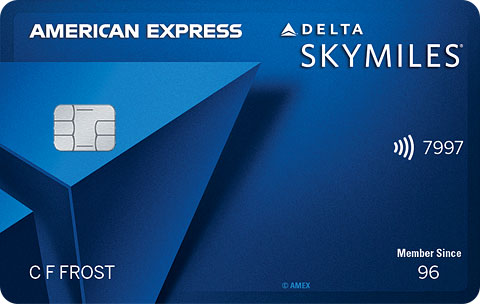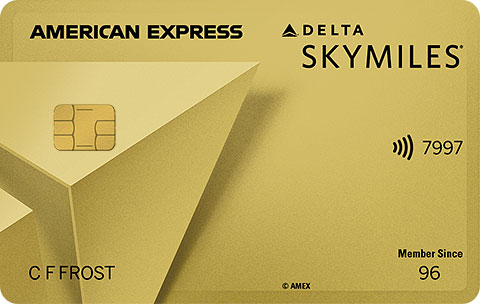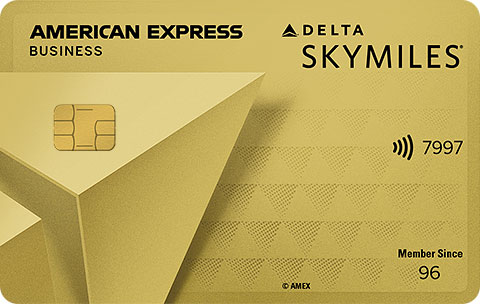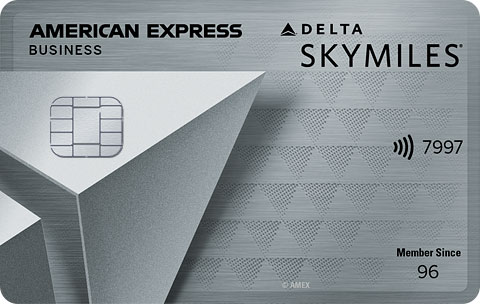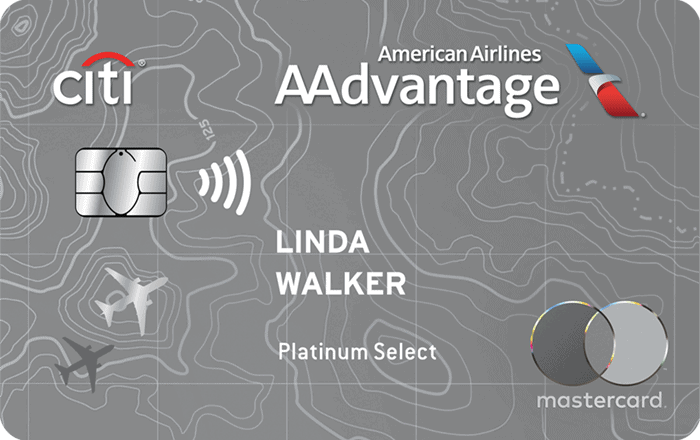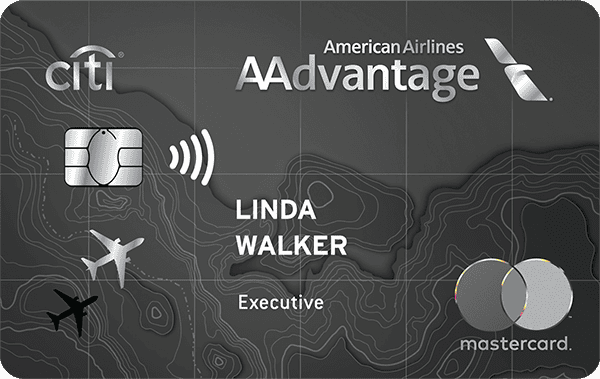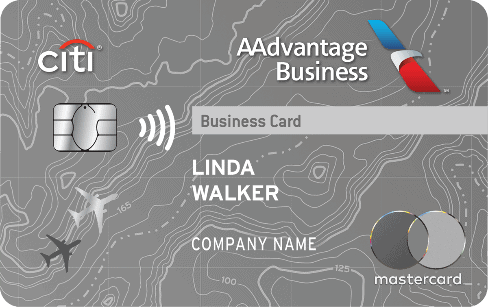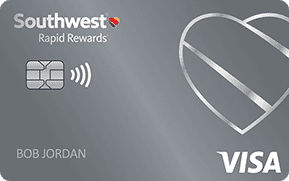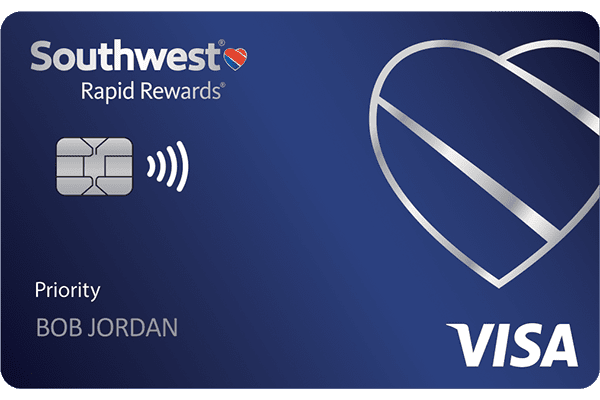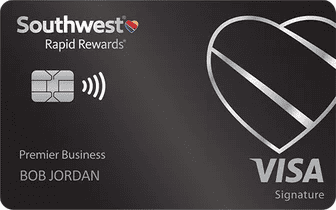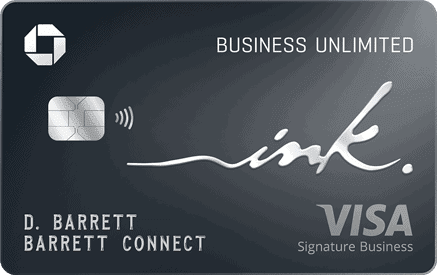
10xTravel is part of an affiliate sales network and receives compensation for sending traffic to partner sites, such as CreditCards.com. This compensation may impact how and where links appear on this site. This site does not include all financial companies or all available financial offers. Terms apply to American Express benefits and offers. Enrollment may be required for select American Express benefits and offers. Visit americanexpress.com to learn more. All values of Membership Rewards are assigned based on the assumption, experience and opinions of the 10xTravel team and represent an estimate and not an actual value of points. Estimated value is not a fixed value and may not be the typical value enjoyed by card members.
Note: Some of the offers mentioned below may have changed or may no longer be available. The content on this page is accurate as of the posting date; however, some of our partner offers may have expired. You can view current offers here.
Citi is an advertising partner.
If you want to get the biggest bang for your buck when paying for flights, you should pay using a co-branded airline credit card—right?
Not so fast.
Intuitively, you’d think that using the credit card of the airline you’re flying with would earn you the most miles on your flight purchases. But—just like the real world—the world of points and miles is not so simple.
In most cases, you’re better off using a general travel rewards credit card to pay for flight purchases. You’ll earn more points, which you can then transfer to the airline loyalty program with which you wish to fly. That equals out to more award flights and greater savings than using a co-branded airline credit card.
However, that’s not to say that co-branded airline credit cards are all bad. They do offer certain advantages over general travel rewards credit cards.
Let’s take a deep dive into when it makes sense to pay with a co-branded airline credit card vs. a general travel rewards credit card.
Co-Branded Airline Credit Card vs. General Travel Rewards Credit Card: What’s the Difference?
Before jumping in, let’s take a quick look at the differences between co-branded airline credit cards and general travel rewards credit cards.
A co-branded airline card is issued by a bank or card issuer together with an airline. American Express, Chase, Citi and Barclays all have co-branded airline cards.
Co-branded airline credit cards earn miles with a specific airline loyalty program. For instance, a United credit card that’s co-branded with Chase will earn United MileagePlus miles, not Chase Ultimate Rewards points.
These miles can then be redeemed either with the airline itself or with its alliance or non-alliance partners for award flights, depending on their rules.
Co-branded airline credit cards earn miles on a range of bonus spending categories, the most lucrative of which will typically be purchases with the airline itself. They also offer exclusive perks when flying with the airline that you’d otherwise only have access to through elite status.
That’s where co-branded airline credit cards stand out. In many cases, you’ll gain perks that come with elite status without having to fly hundreds of flights every year to achieve them. Instead, you’ll simply have to pay the annual fee on your card.
In contrast, a general travel rewards card does just what it says in the fine print. It rewards travel purchases, among other bonus spending categories, offers travel-related perks and enables you to redeem your points toward travel purchases.
The best general travel rewards credit cards earn a flexible rewards currency. These rewards currencies can be redeemed for flights and hotel stays with any partner airline and hotel loyalty program. Even if the airline you want to fly with isn’t a direct partner of your card issuer, it’s often the case that it’s a partner of another airline with whom your card issuer partners. That means you can first transfer your points to an eligible partner and then book flights with your desired airline through the partner.
This is one of the main attractions of general travel rewards credit cards. Instead of limiting your point redemption options to one airline and their partners, you can instead earn points you can transfer directly to numerous airlines. This flexibility enables you to book the most cost-efficient flight and allows for outsized value redemptions.

Strategy for Comparison
With so many co-branded airline credit cards and general travel rewards credit cards on the market, it’s easy to get bogged down in details and what-ifs.
With this in mind, we’ve narrowed our comparison down to a few general travel rewards cards and their co-branded airline card equivalents issued by major U.S. airlines.
We’ve outlined the differences between using a co-branded airline credit card vs. a general travel rewards card to pay for flights, so you can build your own points and miles strategy.
We’ve also tried to stick to paying for flights as the main focus. However, it’s important to consider the wider and more lucrative bonus spending categories offered by general travel rewards cards, as your higher earnings can then be transferred to more total airline miles.

Delta Air Lines Credit Cards
| Card | Annual Fee |
|---|---|
| Delta SkyMiles® Blue American Express Card | $0 (see rates & fees) |
| Delta SkyMiles® Gold American Express Card | $0 in the first year; $150 thereafter (see rates & fees) |
| Delta SkyMiles® Platinum American Express Card | $350 (see rates & fees) |
| Delta SkyMiles® Reserve American Express Card | $650 (see rates & fees) |
| Delta SkyMiles® Gold Business American Express Card | $0 in the first year; $150 thereafter (see rates & fees) |
| Delta SkyMiles® Platinum Business American Express Card | $350 (see rates & fees) |
| Delta SkyMiles® Reserve Business American Express Card | $650 (see rates & fees) |
Delta SkyMiles® Blue American Express Card
10,000
Bonus Miles
after you spend $1,000 in purchases on your new card in your first 6 months.
Delta SkyMiles® Gold American Express Card
50,000
Bonus Miles
after you spend $2,000 in eligible purchases on your new Card in your first 6 months of Card Membership.
Annual Fee:
$0 introductory annual fee for your first year, then $150.
Delta SkyMiles® Gold Business American Express Card
Earn 60,000
Bonus Miles
after spending $4,000 in purchases on your new Card in your first 6 months of Card Membership.
Annual Fee:
$0 introductory annual fee for your first year, then $150.
Delta SkyMiles® Platinum American Express Card
60,000
Bonus Miles
after you spend $3,000 in eligible purchases on your new Card in your first 6 months of Card Membership
Annual Fee:
$350
Delta SkyMiles® Platinum Business American Express Card
70,000
Bonus Miles
after spending $6,000 in purchases on your new Card in your first 6 months of Card Membership.
Annual Fee:
$350
Delta SkyMiles® Reserve American Express Card
70,000
Bonus Miles
after you spend $5,000 in eligible purchases on your new Card in your first 6 months of Card Membership.
Annual Fee:
$650
Delta SkyMiles® Reserve Business American Express Card
80,000
Bonus Miles
after spending $10,000 in purchases on your new Card in your first 6 months of Card Membership.
Annual Fee:
$650
If you hold an American Express general travel rewards credit card that earns Membership Rewards points, you can transfer your points to Delta SkyMiles at a ratio of 1:1.
That means if you’re considering applying for a co-branded Delta credit card, your best bet is to first compare your potential earnings on a Membership Rewards-earning Amex card.
Something to consider is that Amex charges 0.06 cents per point transferred to domestic U.S. airlines, up to a maximum of $99, to offset excise taxes. That works out to 60 cents per 1,000 points transferred.
Let’s use the example of paying for a $600 Delta-operated flight with one of their co-branded credit cards vs. an Amex general travel rewards credit card.
If you charged a $600 Delta-operated flight to the Delta SkyMiles® Gold American Express Card, you’d earn 1,200 Delta SkyMiles (2X miles per dollar spent). This transfer would cost you 0.72 cents in excise fees. The Delta Skymiles Gold American Express Card has an annual fee of $0 in the first year and $150 thereafter (see rates & fees).
If you were to instead charge this flight to the American Express® Gold Card, with a slightly higher annual fee of $325 (rates & fees), you’d earn 1,800 Membership Rewards points (3X points per dollar spent). You could then transfer these at a 1:1 ratio, giving you 1,800 Delta SkyMiles. That’s a difference of 600 miles.
To access the same earnings rate of 3X miles with a co-branded Delta credit card, you’d have to use the Delta SkyMiles® Platinum American Express Card, with an even higher annual fee of $350 (see rates & fees).
Of course, you could point out that you still have to pay $100 more in annual fees on the Amex Gold card compared to the Delta SkyMiles Gold card. However, this increased annual fee gives you access not only to a higher rewards rate on flight purchases, but also to a wider range of bonus spending categories.
The Amex Gold card is unparalleled when it comes to earning on everyday expenses, earning 4X points on groceries at U.S. supermarkets on up to $25,000 per calendar year (1X points thereafter) as well as 4X points on restaurants worldwide on up to $50,000 per calendar year (1X points thereafter), including delivery and takeout in the U.S. These higher earnings on everyday purchases enable you to earn more points compared to a co-branded Delta card, which you can then transfer to Delta for more award flights.
How does Delta’s premium co-branded card—the Delta SkyMiles® Reserve American Express Card—fare when it comes to paying for the same $600 flight?
Using this card, you’d earn a paltry 1,800 Delta SkyMiles.
In other words, you’d earn as many miles as you would on the Amex Gold card but for an annual fee of $650 instead of $325 (see rates & fees).
What if you were to charge the same flight to Amex’s premium travel rewards credit card, The Platinum Card® from American Express? Its annual fee is slightly higher than its Delta equivalent, coming in at $695 per year (see rates & fees).
For this $695 annual fee, you’ll receive 5X points on flights booked directly with the airline or through American Express Travel®, on up to $500,000 per calendar year.
So that same $600 Delta flight would net you 3,000 Membership Rewards points, which you can convert to 3,000 Delta SkyMiles, for a fee of $1.80. Not to mention that the card also comes with more than $1,500 worth of statement credits and perks.
In this case, forking out $45 more for the Amex Platinum would be worth its weight in gold compared to holding the Delta SkyMiles Reserve card, when paying for Delta-operated flights.
Using Delta Credit Cards for Free Checked Bags
Paying for Delta flights with a general travel rewards card from Amex makes a lot more sense when it comes to maximizing your miles earned per dollar spent.
However, that doesn’t mean you shouldn’t have a Delta credit card.
Delta SkyMiles® Gold American Express cardholders and those with higher-tier Delta cards enjoy a “first checked bag flies free” perk for them and up to nine companions on the same reservation. Given that a first checked bag costs at least $35, that could net you savings of up to $630 per round-trip.
The best part is that you don’t even need to pay with the card to use the benefit. You can hold the card for this benefit alone while maxing out your miles earned by paying with another Amex card.
If you fly frequently with Delta, you can easily offset the co-branded cards’ annual fees without charging flights to them, with lucrative perks such as annual first class companion certificates, complimentary Delta SkyClub access and elite status with Hertz® up for grabs.
So, while you should stick to one of Amex’s general travel rewards cards when paying for Delta flights, a frequent flyer with Delta should still consider holding a co-branded card for access to exclusive perks and savings.

American Airlines Credit Cards
American Airlines is the only airline to offer co-branded credit cards through two separate card issuers: Citi and Barclays.
Together with Citi, American Airlines offers three consumer cards and one business card:
| Card | Annual Fee |
|---|---|
| American Airlines AAdvantage® MileUp® Card | $0 |
| Citi® / AAdvantage® Platinum Select® World Elite Mastercard® | $0 in the first year; $99 thereafter |
| Citi® / AAdvantage® Executive World Elite Mastercard® | $595 |
| Citi® / AAdvantage Business™ World Elite Mastercard®Mastercard® | $0 in the first year; $99 thereafter |
Citi® / AAdvantage® Platinum Select® World Elite Mastercard®
For a limited time, earn 80,000
American Airlines AAdvantage® bonus miles
after $3,500 in purchases within the first 4 months of account opening.
Annual Fee: $99, waived for the first 12 months
Citi® / AAdvantage® Executive World Elite Mastercard®
Earn 70,000
American Airlines AAdvantage® bonus miles
after spending $7,000 in purchases within the first 3 months of account opening.
Annual Fee: $595
Citi® / AAdvantage Business™ World Elite Mastercard®
Earn 65,000
American Airlines AAdvantage® bonus miles
after spending $4,000 in purchases within the first 4 months of account opening.
Annual Fee: $99, waived for the first 12 months
With Barclays, American Airlines offers four consumer cards and one business card. However, only the AAdvantage® Aviator® Red World Elite Mastercard® is open for new applications. The other cards can be accessed through product changes only.
Here’s an overview of Barclays co-branded American Airlines cards:
| Card | Annual Fee |
|---|---|
| AAdvantage® Aviator® World Elite Mastercard® | $0 |
| AAdvantage® Aviator® World Elite Blue Mastercard® | $49 |
| AAdvantage® Aviator® Red World Elite Mastercard® | $99 |
| AAdvantage® Aviator® World Elite Silver Mastercard® | $199 |
| AAdvantage® Aviator® World Elite Business Mastercard® | $95 |
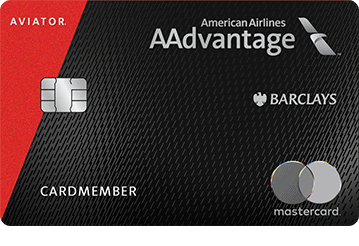
AAdvantage® Aviator® Red World Elite Mastercard®
60,000
AAdvantage Bonus Miles
after making your first purchase and paying the $99 annual fee in full, both within the first 90 days.
Annual Fee: $99
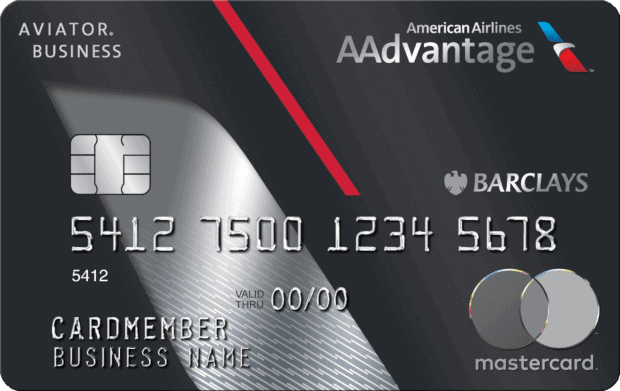
AAdvantage® Aviator® Business Mastercard
No current offer
Annual Fee: $95
Unlike with other airline loyalty programs, you can’t transfer Amex Membership Rewards or Chase Ultimate Rewards points directly to your American Airlines account.
Marriott Bonvoy Points are the only rewards currencies earned through credit card spending that can be transferred directly to American Airlines.
Let’s use our $600 flight example again, this time using an American Airlines-operated flight.
The highest Marriott card earns 2X miles per dollar on travel. If you booked the flight with your Marriott card you’d earn 1,200 Marriott miles. However, Marriott transfers 3:1, so after transferring you’d end up with only 400 AAdvantage miles.
If you were to charge the $600 flight to the MileUp Mastercard, you’d earn 1,200 miles, given that the card earns 2X miles on American Airlines purchases. Additionally, the MileUp Mastercard earns you 1X Loyalty Points per mile earned, meaning you’d earn an extra 1,200 loyalty points on your flight purchase.
When considering which card is better purely when paying for flights, the co-branded American Airlines credit card comes out on top, as you’ll earn additional loyalty points on your purchase.
This puts you closer to elite status, unlocking a range of sought-after perks and even greater mile earnings on American Airlines and partner-operated flights.
Likewise, if you’re a frequent flyer with American Airlines, the Citi / AAdvantage Executive World Elite Mastercard would earn you 2,400 miles on the same $600 American Airlines operated flight.
There’s not a single general travel rewards credit card that could give you as lucrative an earnings rate on an American Airlines flight purchase.
So, overall, you’d be better off using a co-branded American Airlines credit card to pay for American-operated flights as opposed to a general travel rewards credit card.
Take Advantage of Free Checked Bags and Partner Loyalty Programs
The co-branded American Airlines credit cards offer not only an advantage when it comes to earning miles and loyalty points, but also when it comes to checked bags.
With the Citi / AAdvantage Platinum Select World Elite Mastercard, the first checked bag for you and up to four companions on the same reservation flies for free. With a starting price of $40 per first-checked bag, that equals out to savings of up to $400 per round-trip. With the Citi / AAdvantage Executive World Mastercard, the perk includes up to eight travel companions on the same reservation, equaling savings of up to $720 per round-trip.
If you can use this perk often, you could save hundreds—if not thousands—of dollars every year.
Technically, you don’t even need to pay for the flight using your card—being a cardholder is enough to qualify.
However, considering that no other general travel rewards credit card will earn you more AAdvantage miles on an American Airlines flight purchase, you may as well stick to using a co-branded American card when paying for flights.
The only caveat to this strategy is partner airlines. In some cases, you can pay for American Airlines award flights using miles from other airline loyalty programs, for outsized value. That means you could get a cheaper rate by booking an American Airlines flight through a partner airline.
For example, you could charge a $600 American Airlines flight to The Platinum Card from American Express, earning you 3,000 Membership Rewards points. You can transfer these to British Airways Avios points at a ratio of 1:1 and use Avios to book an American Airlines flight. You can typically get better rates on non stop domestic flights as well as those going to Hawaii and the Caribbean by booking American Airlines flights through British Airways.
Alternatively, you could transfer those 3,000 points to Etihad Guest miles at a 1:1 ratio, for outsized redemptions on long-haul business flights with American Airlines.
In this case, it could make more sense to use a general travel rewards card with a higher points multiplier on flight purchases, when paying for American Airlines flights. This will enable you to transfer these points to a partner airline program for more lucrative American Airlines award bookings.
However, if this strategy involves too many steps for your liking, you’d be better off sticking to a co-branded American Airlines card when paying for flights.

United Airlines Credit Cards
United Airlines partners with Chase to offer four consumer and two business cards with the following annual fees:
| Card | Annual Fee |
|---|---|
| The New United Gateway℠ Card | $0 |
| The New United℠ Explorer Card | $0 in the first year; $150 thereafter |
| The New United Quest℠ Card | $350 |
| The New United Club℠ Card | $695 |
| The New United℠ Business Card | $150 |
| United Club Business Card | $450 |
Limited-Time Offer: Earn 60,000
Bonus Miles
after you spend $3,000 on purchases in the first 3 months your account is open.
Annual Fee: $0 for your first year, then $150.
Earn 100,000
bonus miles
and 3,000 Premier qualifying points after you spend $4,000 on purchases in the first 3 months your account is open.
Annual Fee: $350
Limited-Time Offer: Earn 90,000
Bonus Miles
after you spend $5,000 on purchases in the first 3 months from account opening.
Annual Fee: $695
Earn 75,000
Bonus Miles
and 2,000 PQP after you spend $5,000 on purchases in the first 3 months your account is open.
Annual Fee: $0 for your first year, then $150.
If you hold an Ultimate Rewards earning card from Chase, you can transfer your points to your United MileagePlus account at a 1:1 transfer ratio.
So, when considering whether co-branded airline credit cards or general travel rewards credit cards are better when purchasing United flights, our comparison will focus on Chase cards.
Using our $600 flight example, let’s compare your earnings potential on the Chase Sapphire Preferred® Card to co-branded United cards.
The Sapphire Preferred earns 5X points on travel purchased through Chase Travel℠ (excluding hotel purchases that qualify for the $50 annual hotel credit). That means you’d earn 3,000 Ultimate Rewards points if you purchased your $600 flight through the Chase Travel Portal.
These points can be transferred to your MileagePlus account at a 1:1 ratio, free of excise fees—unlike Amex point transfers to domestic airlines. Additionally, you’d still earn United miles on your original purchase through Chase, based on the fare price for United and United Express flights, as well as partner flights ticketed by United. That means you effectively double dip on your earnings.
With the annual fee of $150 ($0 introductory annual fee for the first year, then $150), how much would the United℠ Explorer Card earn you on the $600 flight?
You’d receive a mere 1,200 United MileagePlus miles, less than half of what you’d earn using the Chase Sapphire Preferred Card. You would receive an additional Premier Qualifying Point (PQP) bonus of 25 PQPs, since you spent more than $500 using your Explorer card. But given that you need a minimum of 5,000 PQPs to qualify for Premier Silver status (or 4,000 PQPs plus 12 PQF), that 25 PQP bonus is a mere 0.5% of the required number.
How does United’s co-branded premium card—the United Club℠ Card—fare against Chase’s top-tier travel card, the Chase Sapphire Reserve®?
The United Club℠ Card earns 4X miles on purchases with United, meaning that a $600 fare would earn you 2,400 United MileagePlus miles.
While its $695 annual fee is steep, the Chase Sapphire Reserve® card, with its $795 annual fee, offers an even more impressive return. If you charged the $600 flight to the Chase Sapphire Reserve® card through the Chase Travel℠ portal, you’d earn a massive 4,800 points, thanks to its new 8X points earning rate on Chase Travel℠ purchases (excluding the first $300 spent on travel, if you haven’t used your annual credit).
Alternatively, you could have the first $300 of the fare reimbursed through the Sapphire Reserve card’s flexible annual $300 travel credit. If you chose this option, you’d earn 2,400 Ultimate Rewards points on the remaining $300 of the fare, but you’d still double-dip by earning United base miles on the entire fare.
Overall, when wanting to earn points on flights, your best bet is to stick with cards such as the Chase Sapphire Preferred rather than co-branded United cards.
Premium Perks for a Low Annual Fee: The United Explorer Card
While the Chase Sapphire Preferred knocks it out of the park when it comes to paying for flights, the United Explorer Card comes with benefits the Sapphire Preferred can’t compete with.
When you purchase your flight ticket using your Explorer card, the first checked bag for you and up to one companion on the same reservation will fly for free. For domestic routes, United charges $35 for the first checked bag. That means you and your companion could save up to $140 per round-trip.
If you happen to fly frequently with checked baggage, this perk could save you hundreds of dollars every year, offsetting the annual fee by a long shot.
Therefore, if you use this perk every time you fly, the value calculation changes when comparing the Explorer card vs. the Sapphire Preferred for paying for flights.
Sure, the Explorer card earns 1,800 fewer miles than the Sapphire Preferred on a $600 flight. Those 1,800 miles are worth just $21.60 if redeemed for 1.2 cents apiece. However, savings of $140 per round-trip on baggage fees are the equivalent of almost 11,667 United miles. Of course, you don’t actually receive 11,667 miles, but to compare like-with-like, that’s the hidden value of the “first checked bag flies for free” perk.
Not to mention, the Explorer card offers two annual United ClubSM one-time entry passes, as well as a $120 statement credit for a Global Entry, Nexus or TSA PreCheck® application fee, every four years, when charged to your card through an eligible enrollment provider. This increases its value compared to the Sapphire Preferred when comparing the cards in their entirety.
So, if you value a free first-checked bag for you and your companion, paying for a United flight with the Explorer card could offer more value than using the Chase Sapphire Preferred Card.

Southwest Airlines Credit Cards
Together with Chase, Southwest offers three consumer and two business cards. All information about the Southwest Rapid Rewards® Premier Credit Card has been collected independently by 10xTravel.
| Card | Annual Fee |
|---|---|
| Southwest Rapid Rewards® Plus Credit Card | $69 |
| Southwest Rapid Rewards® Premier Credit Card | $99 |
| Southwest Rapid Rewards® Priority Credit Card | $149 |
| Southwest® Rapid Rewards® Premier Business Credit Card | $99 |
| Southwest® Rapid Rewards® Performance Business Credit Card | $199 |
Southwest Rapid Rewards® Plus Credit Card
50,000
Bonus Points
after you spend $1,000 on purchases in the first 3 months from account opening.
Annual Fee: $69
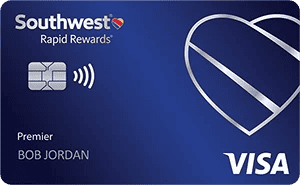
Southwest Rapid Rewards® Premier Credit Card
50,000
Bonus Points
after you spend $1,000 on purchases in the first 3 months from account opening
Annual Fee: $99
Southwest Rapid Rewards® Priority Credit Card
50,000
Bonus Points
after spending $1,000 on purchases in the first 3 month from account opening
Annual Fee: $149
Southwest® Rapid Rewards® Performance Business Credit Card
80,000
bonus points
after you spend $5,000 on purchases in the first 3 months from account opening.
Annual Fee: $199
Southwest® Rapid Rewards® Premier Business Credit Card
60,000
bonus points
after you spend $3,000 on purchases in the first 3 months from account opening.
Annual Fee: $99
If you hold an Ultimate Rewards earning card from Chase, you can transfer your points to Southwest Rapid Rewards at a 1:1 transfer ratio.
That means it makes sense to compare your potential earnings on the Chase Sapphire Preferred Card with those on the Southwest Rapid Rewards® Premier Credit Card, given their similar annual fees.
As we’ve already seen, a $600 Southwest flight purchased through Chase Travel using your Sapphire Preferred would earn you 3,000 Ultimate Rewards points. After transferring your points to Southwest, that would leave you with 3,000 Rapid Rewards points.
In contrast, that same flight would earn you a mere 1,800 Rapid Rewards if charged to the Southwest Rapid Rewards Premier Credit Card.
Even if you were to charge the flight to Southwest’s most expensive card, the Southwest® Rapid Rewards® Performance Business Credit Card, you’d still earn just 2,400 Rapid Rewards—600 miles less than the Sapphire Preferred for more than double the annual fee.
Given that Southwest allows first- and second- checked bags to fly for free for all passengers, paying with a Southwest card wouldn’t net you any additional benefits such as baggage perks. Likewise, the Premier Card gives you a Tier Qualifying Point (TQP) boost of just 1,500 TQPs after charging $5,000 to the card, which is a little over 4% of the 35,000 TQPs required to earn A-List status.
Therefore, purchasing a flight with a Southwest card gives little advantage over the Sapphire Preferred, whether in terms of miles earned, perks received or earning toward status.
Southwest Credit Cards: Your Key to the Southwest Companion Pass
Although co-branded Southwest credit cards may give you little advantage when it comes to paying for flights, that doesn’t make them redundant.
In fact, Southwest credit cards play a crucial role when trying to earn the coveted Southwest Companion Pass—unless you’re willing to fly 100 flights within a calendar year, that is.
The Southwest Companion Pass lets a companion fly with you for just $5.60 in taxes and fees, for an unlimited number of times. Unlike other companion certificates with blackout dates, large fees and one-time usage, the Southwest Companion Pass is really as good as it sounds.
To earn the Southwest Companion Pass, you need to earn 135,000 Rapid Rewards points in a calendar year. Once you’ve hit that requirement, you’ll receive the Companion Pass for the remainder of the year you earn it plus the following year.
For this reason, it’s best to earn the Companion Pass as early in the calendar year as possible, so you can get the maximum usage out of it.
The easiest way to earn the Southwest Companion Pass is through earning welcome bonuses on Southwest’s credit cards. Typically, you’ll either earn the welcome bonus on one personal card and one business card or on two Southwest business cards. If you’re lucky, the welcome bonuses alone could net you over 135,000 points. If not, you’ll need to make up the difference in spending.
So while the Southwest credit cards may not be the best when it comes to paying for flights, they’re unmatched when it comes to earning the Southwest Companion Pass.
Final Thoughts
As you can see, your spending on airfare will typically earn you more miles when charged to a general travel rewards card rather than the airline’s co-branded credit card.
But that’s not to say you should throw your co-branded airline cards out altogether.
Co-branded airline cards can offer significant savings if you fly with checked baggage or value lounge access, companion certificates and other exclusive perks.
So, instead of going for one card over the other, have your general travel rewards card at the ready when paying for flights, and keep your co-branded airline card for those exclusive perks and savings.
New to the world of points and miles? The Chase Sapphire Preferred® Card is the best card to start with.
With a bonus of 75,000 bonus points after you spend $5,000 on purchases in the first 3 months from account opening. , 5x points on travel booked through the Chase Travel Portal and 3x points on restaurants, streaming services, and online groceries (excluding Target, Walmart, and wholesale clubs), this card truly cannot be beat for getting started!
Editors Note: Opinions expressed here are author’s alone, not those of any bank, credit card issuer, hotel, airline, or other entity. This content has not been reviewed, approved or otherwise endorsed by any of the entities included within the post.



